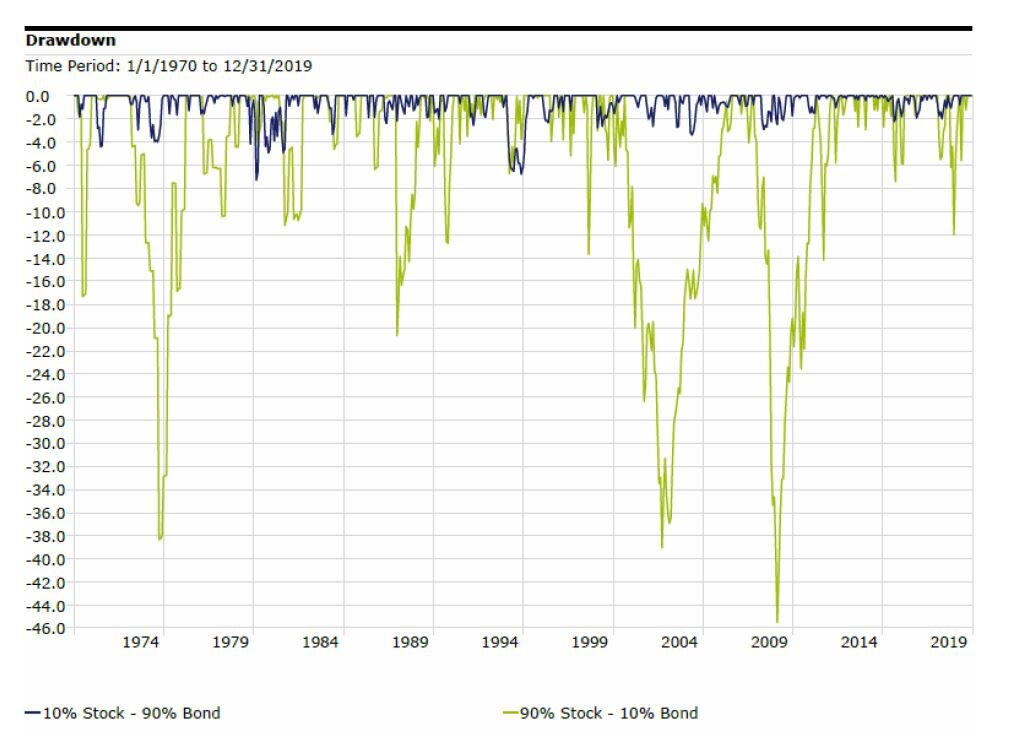Does your employer offer company stock as part of your compensation package? There are many forms of equity compensation ranging from different types of stock awards to employee stock options (ESO) and employee stock purchase plans (ESPP). Over the last several years, Restricted Stocks Units (RSU) have become one of the most popular alternatives offered by companies.
Unlike pure stock awards that grant shares of stock or stock options that provide an employee the right to purchase shares at a predetermined price for a specific period of time, grants of RSUs are not actual shares of stock (yet). An RSU is essentially a promise made by the employer company to deliver to the employee shares of stock or cash payment for the value of stock shares following a vesting schedule. The vesting schedule is often based on a required length of employment, such as a three-year or four-year period, or other company performance goals. The number of units generally corresponds to shares of stock, but the units have no value until the employee receives the corresponding stock shares (or equivalent payment) when they vest.
How do RSUs Work?
Let’s say your employer company grants you 1,000 Restricted Stock Units this year with a grant date of September 1st, and a 4-year vesting schedule under which 25% of the units vest each year as shares of the company’s stock. The following September 1st after the original grant date (one year later) as long as you had continued your employment, the first 25% of your 1,000 RSUs vests as actual company stock shares. Assuming the market value of the stock at the time of vesting is $50 per share, you would have 250 shares of stock worth $12,500.
Once the shares have vested and been delivered, you now have ownership rights such as voting rights and rights to dividend payments. You can also choose to hold or to sell the shares from that point. In each subsequent year going forward, the next 25% of your RSUs would vest until the 4th year when the remaining 250 of the 1,000 units vest.
One of the first important planning considerations for Restricted Stock Units is their taxation. How are RSUs taxed and how might that impact your tax situation?
There are three triggering events with RSUs to understand.
When You Receive RSU Grants
In most cases, at the time you receive your RSU grants, there are no tax implications. Because there is no transfer of actual property by the company until vesting in the form of shares or cash payment, the IRS does not consider the value of the stock represented by RSUs as income compensation when the grant occurs. This means the RSU grants themselves are not taxed.
When RSUs Vest
Once the restricted units vest and the employer delivers the shares of stock or equivalent cash payment, the fair market value of the vested shares or cash payment as of that date (minus any amount the employee had to pay for the RSUs) is considered income and is taxed as ordinary income. Typically, companies grant RSUs without the employee paying a portion, so the full value of the vested shares would be reported as income.
In our example above with the 1,000 RSU grants, 250 RSUs vested with the fair market value of $50 per share for a total value of $12,500. This $12,500 would be considered compensation and would be reportable as ordinary income for that tax year. This would apply to the remaining RSUs in the years that they vest. Because this amount is treated as ordinary income, the applicable tax rate under the federal income tax brackets would apply (as well as applicable state income taxes).
To cover the tax withholding for this reported income at vesting, most companies allow you a few options. These may include:
Having the number of shares withheld to cover the equivalent dollar amount
Selling shares to provide the proceeds for the withholding amount
Providing a cash payment into the plan to cover the withholding
When You Sell Shares
At the time RSUs vest, the market value of those shares is reported as ordinary income. That per-share value then becomes the new cost basis for that group of shares. If you immediately sell the vested shares as of the vesting date, there would be no additional tax. The value of the shares has already been taxed as ordinary income, and the sale price of the shares would equal the cost basis of the shares (no additional gain or loss).
If however, you choose to hold the shares and sell them in the future, any difference between the sale price and the cost basis would be a capital gain or capital loss depending on whether the sale price was greater than or less than the cost basis.
Once again using our example of the 1,000 RSU grants, let’s assume the fair market value of 250 shares at vesting was $50 per share and that you held those shares for over one year. If you then sold the 250 shares for $75 per share, you would have a capital gain of $25 per share ($75 - $50) for a total of $6,250. Since you held the shares for more than one year from the vesting date, this $6,250 would be taxed as a long-term capital gain and subject to the long-term capital gains tax rate of either 0%, 15%, or 20% (as of 2021) depending on your total taxable income.
If you were to sell shares within one year of their vesting date, any capital gain would be a short-term capital gain taxed as ordinary income. Since the federal tax brackets apply to ordinary income, you may pay a higher tax rate on the short-term capital gain than you would on a long-term gain even at the highest long-term capital gains rate of 20% (depending on where your income falls within the tax brackets).
Planning for Additional Income
Because Restricted Stock Units can add to your taxable income (as the units vest and potentially when you sell shares), there are some strategies you may consider to help offset the extra taxable income in those years. For individuals and couples in higher tax brackets, this can be an especially important planning item.
Some examples could include:
Maximizing your pre-tax contributions to your 401k, 403(b), or other retirement accounts. If you or your spouse are not yet contributing to the full annual maximum, this can be a great opportunity. ($19,500 in 2021 plus an extra $6,500 “catch up” for age 50 and above). In some cases, if cash flow is tight, it could even make sense to sell a portion of vested RSUs to replace the income going to the extra contributions.
Contributions to a Health Savings Account (HSA) are pre-tax/tax-deductible, so each dollar contributed reduces your taxable income. If you have a qualifying high deductible health plan, consider funding an HSA up to the annual maximum ($3,600 for individuals/$,7,200 for family coverage, plus an extra $1,000 “catch up for age 55 and above)
Deferred Compensation plans (if available) could be an option. Many executive compensation packages offer types of deferred compensation plans. By participating, you generally defer a portion of your income into a plan with the promise that the plan will pay the balance to you in the future. The amount you defer each year does not count towards your income that year. These funds can grow through different investment options, and you select how and when the balance in the plan pays out to you, based on the individual plan rules. While this can be an effective way to reduce current income and build another savings asset, there are many factors to consider before participating.
Plans can be complex, often less flexible than other savings vehicles, and dependent on the financial strength and commitment of the employer.
Harvesting capital losses in a regular, taxable investment account can also be a good tax management strategy. By selling investment holdings that have a loss, those capital losses offset realized capital gains. In addition, if there are any remaining excess losses after offsetting gains, you can then offset up to $3,000 of ordinary income per year. Any excess losses above the $3,000 can be carried over to the following tax year.
When Should I Sell RSUs?
The factors in the decision to sell or to hold RSUs that have vested as shares (in addition to tax considerations) should be similar to factors you would consider for other individual stocks or investment securities. A question to ask yourself is whether you would choose to invest your own money in the company stock or some other investment. You should consider the fundamentals of the business. Is it a growing business with good prospects within its industry? Is it in a strong financial position; or is it burdened by excessive debt? Consider the valuation of the company. Is the stock price high or low compared to the company’s earnings and cash flow?
Consider what percentage of your investments and net worth the company stock represents. Having too high a concentration of your wealth in a single security poses the risk of significant loss if the stock price falls. Not only are you taking on overall market risk, but you also have the risk of the single company. While each situation is unique, we generally recommend that your percentage of company stock not exceed 10% of your investment assets.
You should also consider your financial needs both short-term and long-term.
Do you have cash expenses you need to fund in the next year or two and do you already have resources set aside?
If you’re counting on proceeds from your RSUs, it could make sense to sell shares and protect the cash needed rather than risk selling shares when the value may be lower.
As you can see, equity compensation and specifically RSUs can affect different parts of your financial plan and can involve so many variables. That’s why it’s critical that you work with your financial and tax advisors when making these more complex planning decisions.
So please don’t hesitate to reach out if we can be a resource.
Robert Ingram, CFP®, is a CERTIFIED FINANCIAL PLANNER™ professional at Center for Financial Planning, Inc.® With more than 15 years of industry experience, he is a trusted source for local media outlets and frequent contributor to The Center’s “Money Centered” blog.
Disclosure: While we are familiar with the tax provisions of the issues presented herein, as Financial Advisors of RJFS, we are not qualified to render advice on tax or legal matters. You should discuss tax or legal matters with the appropriate professional.
















